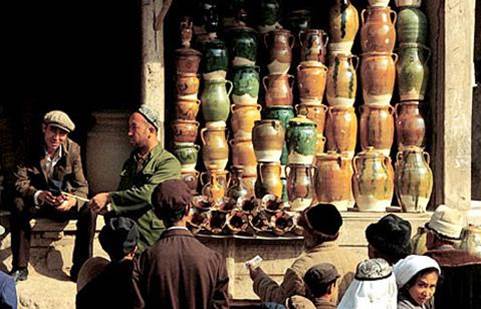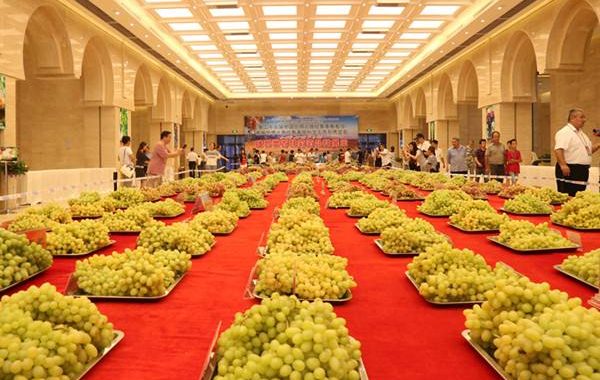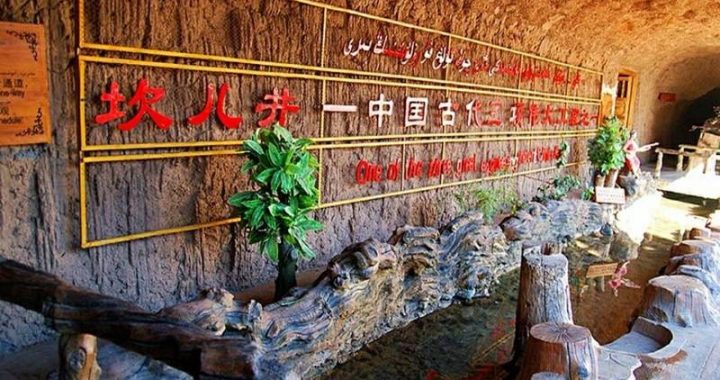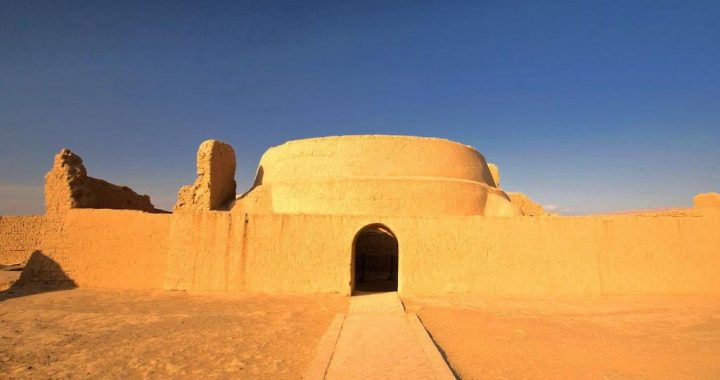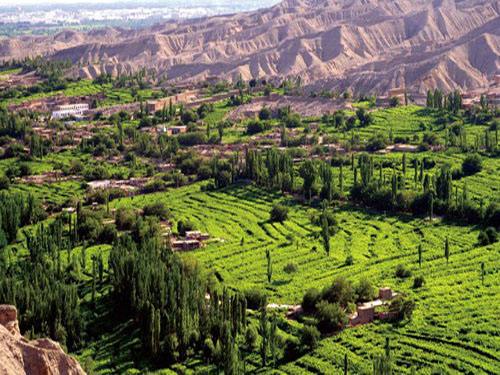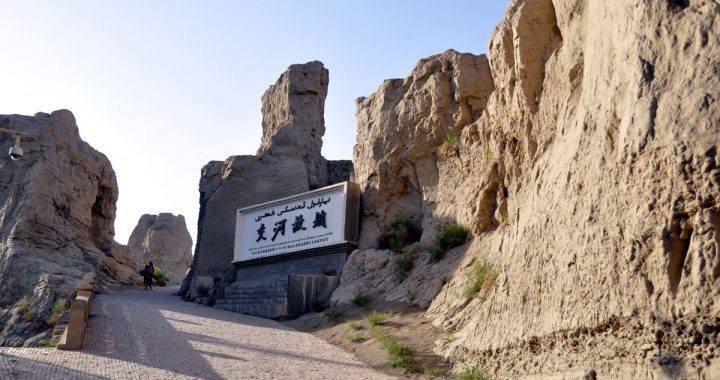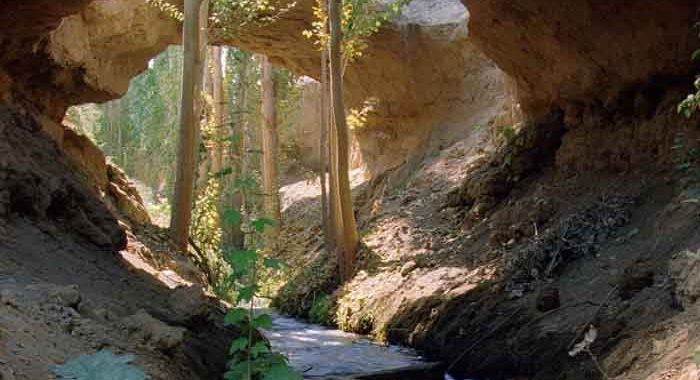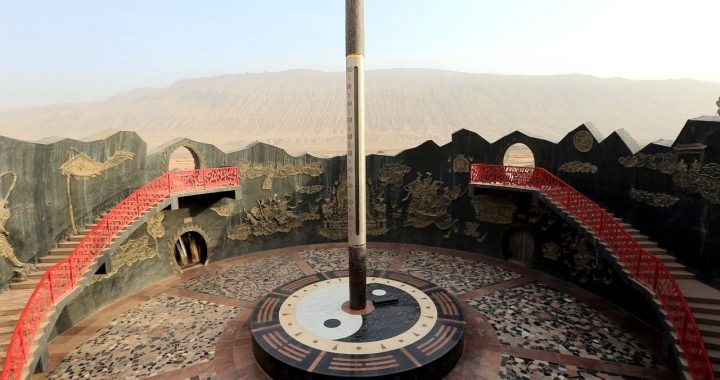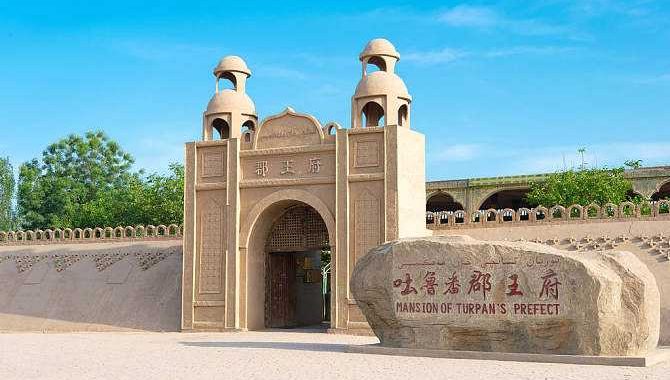Lord Su’s Tower
4 min readLord Su’s Tower of Turpan, Xinjiang is the earliest Islamic brick tower extant in China. It is also known as E’ min Tower. This tower is made by clay and yellowish bricks except the lattice work at the top. It is nearly 36 meters high. The entire tower body is in the shape of column form, becoming smaller gradually from bottom t top, like a sharp sword pointing to the sky. The diameter of its base amounts to 8 meters long. The spacious base is perfectly combined together with the tapering body, making the tower stronger and steadier. In the center of the tower is a solid cylinder made of clay bricks. Around it are the stairs also made of bricks, paving the way along it in the shape of a spiral. On the top of the tower is a pavilion of about 10 square meters large. Windows are widely open around it, through which visitors can enjoy the deep blue sky outside. The sceneries around can be seen on the top of the tower. Seen from a distance away, the entire tower is yellowish gray from bottom to top. Looked closely, patterns of waves, rhombus and round flowers carved by Uygur’s skilled craftsman can be found on the bricks in the monotonous color. These patterns are naturally toned in with each other, elegant in appearance, repeating in design and fluky in details. This unique design on the body fully demonstrates the outstanding achievements of Uygur traditional architecture.
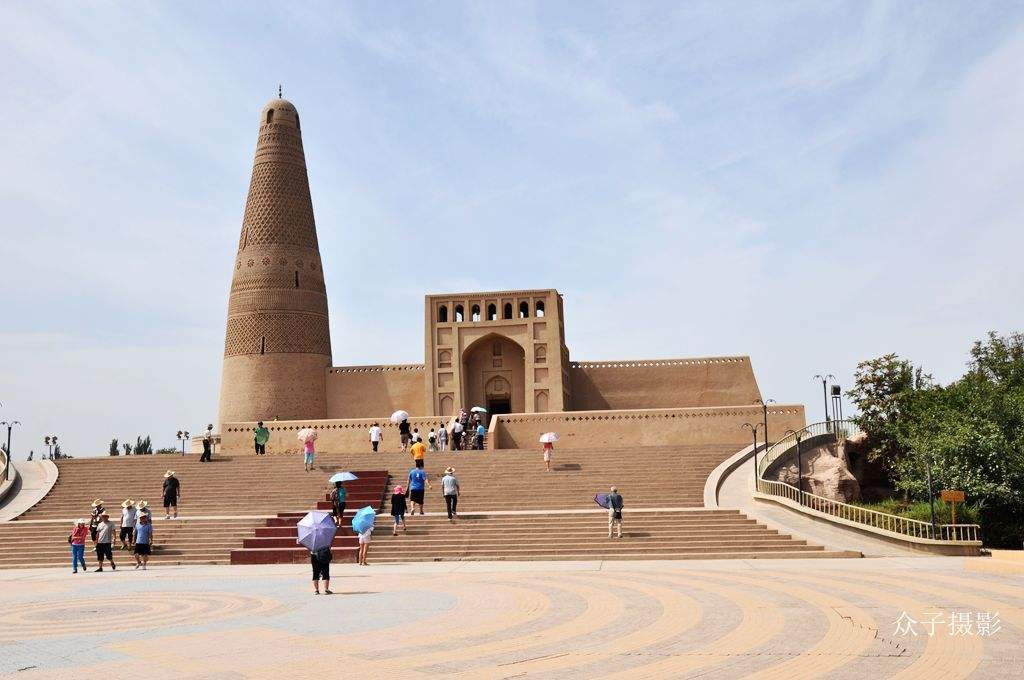
In 1961, Lord Su’s Tower stood safe and sound after a force 12 wind. In case of eventuality, the maintenance workers have add three iron rings on the outer part to make it steadier so as to protect this ancient tower of high art and historic values.
There are two different sayings as to the question who built this tower. In the entrance of the tower, there is a stele, the inscriptions on which are bilingual in Chinese characters and in Uygur. The Chinese version says that it was built by E’ min Hezhou(a title in Uygur, equals to the leader of a tribe). He was titled as commandery prince (a Chinese imperial title, equals to duke in the west) for he had contributed to the pacification of Zungar rebellion during the period of EmperorQianlong in the Qing dynasty. He built this tower in order to show his respect an thanks to Emperor Qianlong. However, the Uygur version says it was built by Su Laiman, the eldest son of E’ min Hezhou in order to pray to the Almighty Allah. We cannot figure out which version is true. The historians tend to believe that both the two sayings are partly true because the tower was co-built by E’ min Hezhou and his son.
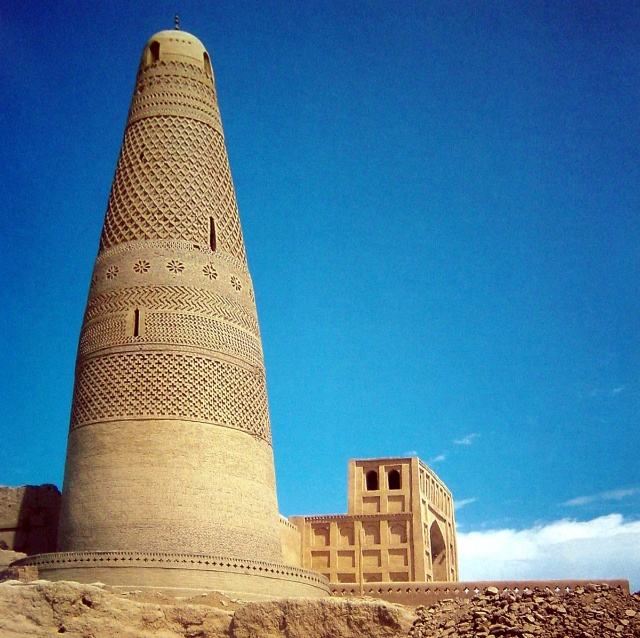
It is said that the E’ mins used to be a big family in Turfan. In the early Qing dynasty, Turfan was occupied by Mongolian Zungar during the rebellion.E’ min Hezhou broke away from them and pledged allegiance with the Qing Empire. After the rebellion was put out and the troops of Empire Qing left, Zungar forces came back and attacked Turfan again and again. Unable to stand any more,E’ min Hezhou, together with the local soldiers and citizens, fought back against Zungar forces and finally drove them away. Later, he went southwards with the Qing troops and helped to put the Two Hezhou Rebellion in the southern area. Brave and skillful in battleas he was, he rendered outstanding services. He was appreciated by Emperor Qianlong for his loyalty to the empire. Promoted again and again, he was finally bestowed the title of commandery prince. His seven sons were all inherited the title and made courtiers in other parts of China. The E’ min family was in its peak at that time.
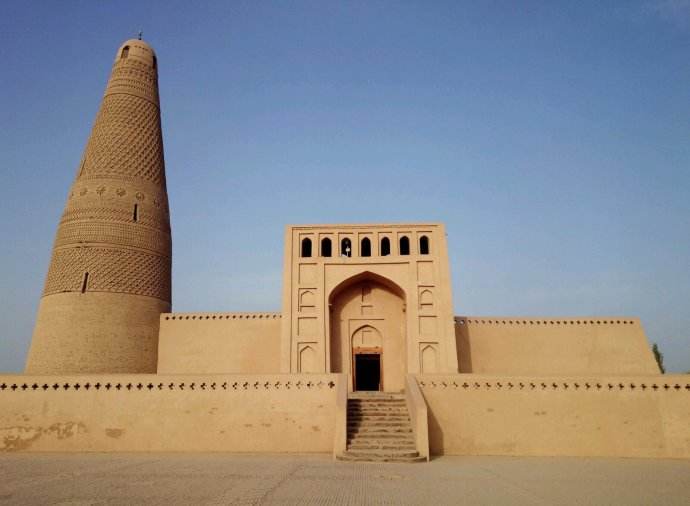
In his late years,E’ min Hezhou lived home for the most of the time and alwaysthought about the mercies the empire had given to him and his whole family. He attributed all his awards and commendations to the mercy of the emperor and the unification of the country. Therefore, he made up his mind to build a tower in order to show his and the following generations’ loyalty to the empire. As a result, Lord Su’s Tower was built under the joint effort of E’ min Hezhou and his sons. They spen almost 7000 taels of silvers on this tower to show their gratitude towards the Almighty Allah and Emperor Qianlong.
